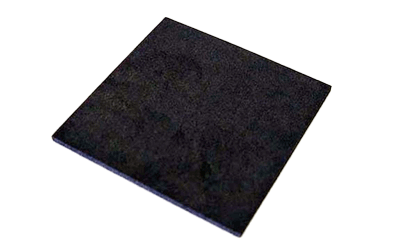What Is a Thermal Conductive Sheet?

A thermal conductive sheet is a sheet with excellent thermal conductivity, also called a heat-dissipating sheet. They are often made of resins such as silicone or acrylic and have enhanced thermal conductivity by blending metal fillers. There are also those that contain ceramic fillers and emphasize electrical insulation properties.
Because it is in sheet form, it is flexible and adheres well. It also has features such as flame retarding capabilities, due to its ability to transfer heat from high heating elements.
Applications of Thermal Conductive Sheets
Thermal conductive sheets are used between heat-dissipating parts, such as heat sinks and heat-generating elements, such as IC chips and batteries installed in various electrical appliances. Because of its light adhesive property, the sheet can be held in place between the heating element and the heat-dissipating component. However, since adhesion is important for full performance, the thermal conductive sheet is generally used in such a way that force is applied in the direction of compression, such as by holding it in place with other parts or by screwing it in place. On the other hand, if the compression force is too strong, the sheet itself may break, so care must be taken.
Because it is thin and space-saving, and can improve heat dissipation, it is an indispensable component in the development of modern products, which are rapidly becoming smaller and more powerful.
Principle of Thermal Conductive Sheets
Since IC chips and batteries reach extremely high temperatures during product operation, heat sinks and other heat-dissipating components are installed to prevent functional failure due to heat. However, even though the surfaces of the heating element and the heat-dissipating component may appear flat to the naked eye, in reality there are minute irregularities such as scratches from processing. Therefore, even if both surfaces are tightly adhered as they are, there will be a small gap between the heating element and the heat-dissipating component, and air will enter this gap. In this condition, the heat generated by the heating element will propagate by avoiding the air between it and the heat-dissipating component because of the low thermal conductivity of air, and heat cannot be dissipated efficiently.
By placing a thermal conductive sheet between the heating element and the heat-dissipating component, the thermal conductive sheet penetrates between the fine irregularities on the surfaces of both components, eliminating the gaps between them. The heat generated by the heating element will then pass through the thermal conductive sheet, which has high thermal conductivity, and as a result, the heat can be efficiently dissipated.
In this way, the thermal conductive sheet improves the heat dissipation effect by increasing the adhesiveness between the two parts, so the good adhesiveness of the thermal conductive sheet itself is a very important factor. Also, depending on the material of the thermal conductive sheet and the shape of the component to which it is attached, there is a possibility that gas emission or oil seepage from the thermal conductive sheet may cause damage to the IC chip or substrate, so care must be taken when selecting a thermal conductive sheet.